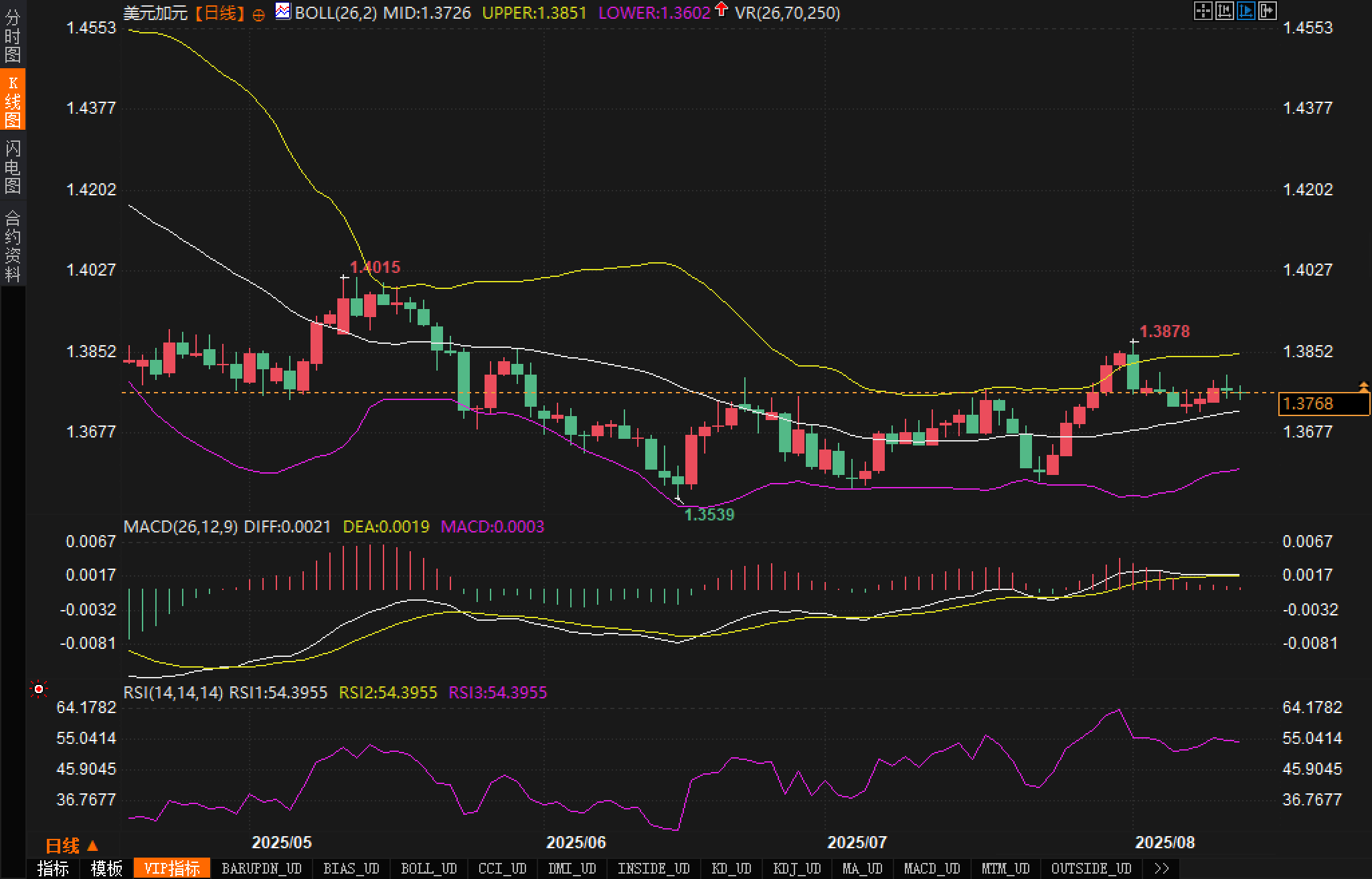Canadian dollar technical signals are confusing, and the short-term outlook is uncertain
2025-08-13 21:52:28

Fundamentals
According to the released US CPI data, the annual inflation rate remained at 2.7% in July, slightly below the market expectation of 2.8%. The core CPI rose faster, reaching 3.1%, exceeding the expected 3.0% and marking the highest increase in five months. This indicates that the US economy still maintains some inflationary pressure, but the overall level is within an acceptable range. Market expectations for a Fed rate hike have declined, increasing the probability of a rate cut. The probability of a Fed rate cut in September has risen to 95%, and the market's increased demand for US Treasury yields has further depressed the value of the US dollar.
However, in Canada, the sharp drop in oil prices has significantly weighed on the Canadian dollar. With oil prices approaching $62 per barrel, the impact of crude oil on the Canadian economy cannot be underestimated. Canada is a major global oil exporter, and the downward trend in oil prices has undoubtedly put further downward pressure on the Canadian dollar. The Canadian dollar lacks sufficient momentum for a rebound, and the USD/CAD pair is expected to remain sideways in the short term.
Technical aspects:
From the technical chart, USD/CAD is still in a range-bound state. The lower support level is around 1.37, while the upper resistance level is concentrated at 1.3878. The price fluctuates within this range and has not yet broken through the current range-bound mode.

The current price is consolidating near the middle line of the Bollinger Bands, and the bandwidth of the Bollinger Bands is gradually narrowing, indicating that market volatility is at a low level. This usually indicates that the market may be about to break out. However, due to the lack of clear trend signals, the direction of the breakthrough is still unclear.
The MACD indicator shows a certain degree of oscillation, with the gap between the DIFF and DEA lines close to zero, indicating a lack of strong market momentum. The MACD histogram is relatively stable, reflecting the relatively flat price fluctuations of USD/CAD, suggesting continued consolidation in the short term.
The RSI is currently fluctuating around 54, within the neutral zone of 50, indicating that the market is neither overbought nor oversold. The stable trend of the RSI shows that market sentiment is relatively balanced, but there is still room for further momentum to develop.
The current support level is around 1.37, while the resistance level is at 1.3878. If the price breaks through the upper resistance level, it is expected to challenge the 1.40 mark; but if it falls below the 1.37 support level, it may accelerate downward and test the 1.3539 support area.
Market sentiment observation:
Market sentiment is currently relatively neutral. While expectations of a Fed rate cut have had some negative impact on the US dollar, market sentiment towards the Canadian dollar has not fully turned positive. Falling oil prices have suppressed the Canadian dollar's upward potential, limiting trader interest in the currency. Meanwhile, concerns about the US economy persist, particularly amidst inflationary pressures and uncertainty surrounding the Federal Reserve's monetary policy, leading to a slightly elevated risk sentiment.
Conclusion
The USD/CAD pair currently lacks a clear direction, and a period of consolidation and volatility is likely to persist. While the weakening US dollar has provided some support for the Canadian dollar, low oil prices have exerted significant pressure on it. The market will continue to monitor the Federal Reserve's monetary policy direction and oil price trends, which will have a significant impact on the Canadian dollar's medium-term outlook.
- Risk Warning and Disclaimer
- The market involves risk, and trading may not be suitable for all investors. This article is for reference only and does not constitute personal investment advice, nor does it take into account certain users’ specific investment objectives, financial situation, or other needs. Any investment decisions made based on this information are at your own risk.





















